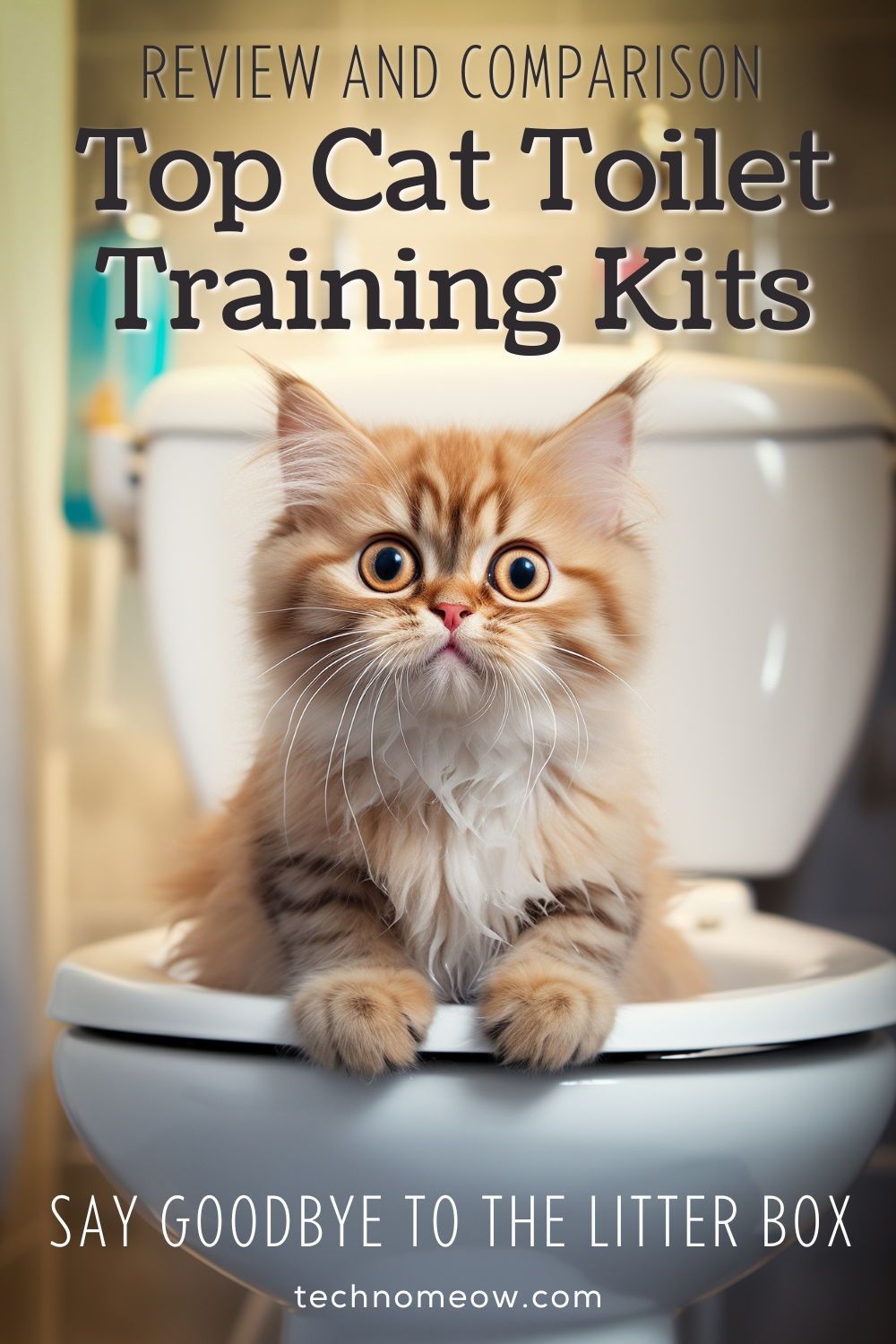Have you ever dreamed of a cat that uses the toilet instead of a litter box? It might sound like a fantasy, but with the right approach, it can be a reality! Toilet training your cat not only saves you time on cleaning but also reduces litter waste. In this post, I’ll guide you through easy steps to help your furry friend master this impressive skill. Ready to embark on this adventure?
Understanding Cat Behavior and Toilet Training

Before diving into the actual training process, it’s essential to understand some basics about cat behavior. Cats are creatures of habit, and they thrive on routine. This characteristic plays a crucial role in toilet training. Here are some key points to consider:
- Instincts: Cats have a natural instinct to bury their waste. This behavior stems from their wild ancestors, who needed to hide their scent from predators. Understanding this instinct can help you choose the right approach in training.
- Territory: Cats are territorial animals. If they feel their territory is being disturbed, they may resist change. This is why gradual introductions to the toilet are vital.
- Comfort: A cat’s comfort level is paramount. If they feel safe and secure in their environment, they are more likely to adapt to new habits.
Now that you have a grasp of your cat's behavior, let’s explore how these factors play into toilet training:
Step 1: Choose the Right Time
Timing is everything! Start training when your cat is healthy, relaxed, and in a routine. Avoid training during stressful times, like moving to a new home or during loud events.
Step 2: Gradual Transition
Begin by placing the litter box next to the toilet. This simple change helps your cat associate the new location with its familiar routine. Keep the litter box clean and consistent, as this is crucial for your cat's acceptance.
Step 3: Elevate the Box
Once your cat is comfortable using the litter box next to the toilet, gradually elevate it. You can use sturdy books or a platform to lift it a few inches a day. The goal is to reach the height of the toilet seat over time.
Step 4: Introduce a Training Toilet
After your cat is using the elevated litter box without hesitation, it’s time to introduce a training toilet. These special seats fit over your regular toilet and are designed to help cats learn to balance while eliminating. Follow the instructions for setup carefully, allowing your cat to adjust.
Step 5: Patience and Praise
Throughout this process, patience is your best friend. Reward your cat with treats and praise every time they use the toilet correctly. Positive reinforcement will encourage them to continue using the toilet.
By understanding your cat's behavior and taking small, manageable steps, you can successfully teach your furry companion to use the toilet. Remember, every cat is different, so be flexible and adjust your training methods as needed. Happy training!
Also Read This: Complete Guide to Outswing a Cricket Ball with Dailymotion Tutorials
3. Essential Supplies Needed for Toilet Training Your Cat
Before diving into the training process, it's important to gather the right supplies to set your feline friend up for success. Here’s a handy list of what you’ll need:
- Toilet Training Kit: These kits usually come with a special seat that fits over your toilet and a series of inserts that help your cat gradually adjust to using the toilet. Brands like Cat Toilet Training System or Litter Kwitter are popular choices.
- Cat Litter: You will need flushable cat litter. It's essential as it will be used in the training kit. Look for options that are specifically marked as safe for flushing.
- Treats: Reward-based training works wonders! Keep some of your cat’s favorite treats handy to encourage positive behavior.
- Funnel or Scoop: These can be helpful for transferring litter and ensuring that everything stays clean and tidy.
- Patience: This isn’t a physical item, but trust me, it’s the most crucial supply! Every cat is different, and some may take longer to learn than others.
Having these supplies ready will ensure that you can start the training without any hiccups. Plus, having everything organized makes the process feel less overwhelming. Remember, the goal is to make this journey enjoyable for both you and your cat!
Also Read This: Exploring Popular Categories and Features on Dailymotion
4. Step 1: Introducing Your Cat to the Toilet
Now that you’ve gathered your supplies, it’s time for the first step: introducing your cat to the toilet. The key here is to make the toilet seem less intimidating and more familiar. Here’s how you can do this:
- Start with the Litter Box: Begin by placing your cat’s litter box next to the toilet. This helps your cat associate the area with their bathroom routine. If they’re used to a specific spot, placing the box nearby will encourage them to explore.
- Gradually Raise the Height: For a week or two, gradually raise the litter box’s height. You can use stacks of newspapers or boxes to slowly get it to the toilet level. Aim for a few inches at a time, as sudden changes can confuse your cat.
- Encourage Exploration: Let your cat explore the toilet area. You can even place their favorite toys nearby to create a positive environment. The idea is to let them feel comfortable around the toilet.
- Positive Reinforcement: Whenever your cat approaches the toilet or uses the litter box in the new location, shower them with praise and treats. This builds a positive association.
- Be Patient: Don’t rush the process. Allow your cat to get accustomed to the new height and location. They’ll need time to adjust, so give them the space they need without pressure.
Once your cat seems comfortable with the toilet area and is consistently using the litter box at the new height, you’ll be ready to move forward in the training process. Remember, this journey is all about making your cat feel safe and secure while learning a new skill!
Also Read This: The Popularity of YouTube vs Dailymotion Key Differences and User Preferences
5. Step 2: Gradual Transition to the Toilet
Now that your cat is accustomed to the first step of the training process, it’s time to make the gradual transition to the toilet itself. This step is crucial, as it helps your feline friend adjust to the new environment without feeling overwhelmed.
Start by moving the litter box closer to the bathroom. Over a few days, shift it a few inches at a time until it’s right next to the toilet. This minor change can help your cat understand that the bathroom is the new bathroom area.
Once your cat is comfortable with the litter box in the bathroom, it’s time to elevate the box to the height of the toilet. You can use stacks of newspapers or a sturdy box to create a gradual incline. This will help your kitty get used to the idea of jumping onto the toilet itself in the future.
During this phase, monitor your cat’s behavior:
- If your cat uses the litter box without hesitation, you’re on the right track!
- If there’s any sign of anxiety, slow down the process. Cats can be sensitive, so patience is key.
Once your cat is happily using the elevated litter box, it’s time for the next step: removing the litter box altogether. This can be a daunting moment, but it’s essential for the final transition.
To do this, you’ll need to replace the litter box with the training seat. Many cat owners find that a gradual reduction in litter and moving to a smaller training seat works best. Allow your cat to adjust to using less litter before making the leap to the toilet.
Keep an eye on your furry friend. If they seem confused or stressed, give them some extra time to adjust. This process should be smooth and positive for both of you!
Also Read This: How to Convert Dailymotion Videos Online Easily
6. Step 3: Using a Cat Toilet Training Kit
Now that your cat is familiar with the bathroom and has adjusted to using a raised litter box, it’s time to introduce a cat toilet training kit. These kits are designed specifically to help simplify the process and make it easier for your cat to learn how to use the toilet.
Most cat toilet training kits come with a series of plastic training seats that fit over your toilet bowl. Here’s how to get started:
- Choose the Right Kit: Look for a reputable brand. Popular options include the “Litter Kwitter” or “CitiKitty”. Each kit comes with different stages to help your cat transition. Read reviews to find the one that best suits your needs.
- Installation: Follow the kit’s instructions to securely attach the training seat to your toilet. Make sure it’s stable—your cat’s comfort is crucial!
- Introduce the Training Seat: Place the kit over the toilet bowl and encourage your cat to explore it. You can sprinkle a little bit of their favorite litter in the training seat to make it more enticing.
It’s designed to help your cat gradually learn to balance and aim correctly. Each stage of the training seat allows for a bit more space for your cat to get used to the toilet bowl’s size and shape.
As your cat becomes more comfortable, you’ll remove the inner rings of the training seat over time, making the opening bigger until they’re ready to use the toilet without assistance. Celebrate their successes! Positive reinforcement, like treats or affection, plays a significant role in encouraging them.
Remember, every cat is unique, and some may take longer than others to adapt. Be patient and supportive, and soon enough, you’ll have a well-trained kitty ready to use the toilet!
Also Read This: Exploring Bluetooth Support for Streaming Videos on Dailymotion
7. Step 4: Reinforcing Positive Behavior
You've made great strides in training your cat to use the toilet, and now it’s time to reinforce those positive behaviors. Just like people, cats thrive on encouragement and rewards. Here’s how you can make your kitty feel like a superstar:
- Use Treats Wisely: Every time your cat successfully uses the toilet, reward them with a tasty treat. Opt for something they love, like their favorite catnip-flavored snacks. This creates a positive association with the act of using the toilet.
- Verbal Praise: Cats respond well to the tone of our voices. Use a cheerful, encouraging tone when they use the toilet. A simple “Good kitty!” can work wonders.
- Consistent Routine: Cats are creatures of habit. Try to maintain a consistent potty schedule, allowing your cat to get used to using the toilet at the same times daily.
- Patience is Key: Training takes time, and every cat learns at their own pace. If your cat doesn’t get it right away, don’t lose heart. Keep the atmosphere positive and stress-free.
Remember that positive reinforcement is about being enthusiastic. Cats can pick up on your emotions, so if you celebrate their successes, they’re more likely to repeat the behavior. Over time, you’ll find that your cat begins to seek out the toilet on their own, associating it with praise and delicious treats!
8. Common Challenges and Solutions
As with any training process, you might encounter some bumps along the way. Here are a few common challenges that cat owners face during toilet training and practical solutions to help you overcome them:
| Challenge | Solution |
|---|---|
| Your cat refuses to use the toilet. | Return to the litter box stage for a bit. Make sure your cat feels comfortable and safe, and gradually reintroduce the toilet training steps. |
| Accidents happen outside the toilet. | Don’t scold your cat; this can create fear. Instead, clean the area thoroughly to remove any lingering scents and encourage them to use the toilet next time. |
| Your cat seems stressed or anxious. | Reassess the environment. Ensure it’s a calm space, free from loud noises or disturbances. Sometimes, a quiet moment can make all the difference. |
| Hesitation to jump onto the toilet. | Consider using a step stool or a sturdy box next to the toilet to help them feel secure when making the leap. |
Training your cat to use the toilet is a journey, and encountering challenges is perfectly normal. By staying patient and using these solutions, you can help your feline friend navigate their way to success. Celebrate each small victory, and soon you'll have a bathroom buddy who uses the toilet like a champ!
 admin
admin








